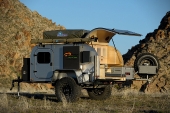





Some places need to be wild




“The most important decision we make is whether we believe we live in a friendly or hostile universe.”― Albert Einstein




"You must be the change you want to see in the world." "First they ignore you, then they laugh at you, then they fight you, then you win." --Mahatma Gandhi
"Preach the Gospel always, and if necessary, use words." --Francis of Assisi.
"Family farms work when the whole family works the farm." -- Adam Klaus














Some places need to be wild




“The most important decision we make is whether we believe we live in a friendly or hostile universe.”― Albert Einstein
 1
1









 1
1




For all your Montana Masonry Heater parts (also known as) Rocket Mass heater parts.
Visit me at
dragontechrmh.com Once you go brick you will never go back!














Some places need to be wild
 3
3








Eric Hanson wrote:Travis,
Thanks. I too have looked at PTO generators. I decided against one as it requires my tractor, and therefore would not be able to use the tractor and generator at the same time.
Typically I think about using a generator when we have winter storms. I would want to run my tractor, likely to clear the 450’ driveway. I would want some electricity at the same time and my generator provides that part. Also, the last time I looked at a PTO generator, the price was about twice that of my Generac, 5.5k generator which does not run everything, but run enough for me.
Eric




 2
2




“The most important decision we make is whether we believe we live in a friendly or hostile universe.”― Albert Einstein


















 2
2




Some places need to be wild
 2
2




The best place to pray for a good crop is at the end of a hoe!

|
the force is strong in this tiny ad
Homestead Pigs Course
https://permies.com/wiki/365748/Homestead-Pigs
|





